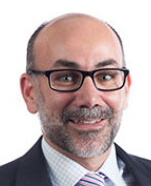
A couple came in. He was an executive with a construction company, his wife a partner of a top-tier law firm. I could tell straightaway that she didn’t want to be there.
She looked at me and tapped her watch three times: “Get a move on, Gino. I have 15 minutes before I need to start leaving. I have a busy day, you know.”
I thought about this for a second. What do I really need to cover, because I don’t want to take up too much of her valuable time?
But for some reason, at that moment, I had a moment of pure clarity. It was pretty simple. If she didn’t value her finances and her family’s future enough to allow more than 15 minutes, then why should I?
Why should I?
They had big goals, a huge income and wonderful dreams. But they weren’t achieving anything.
I closed my book, stood up and said, “No problems. I’ll get it done in five! Let’s just leave it here — thanks for coming in.”
I felt extremely vulnerable at that point in time. This was a high-paying client. What if she fired me? I guess, at that point, I decided that no longer was I going to continue dealing with client mediocrity.
She then got up, asked for a moment, made a phone call to her office and left 90 minutes later.
You see, for years I had been operating on a tried-and-tested formula: Build rapport, find a need and write the business — that is, place a product.
But rapport was No. 1. People do business only with people they like, right?
In my case, wrong. We had to break the mold.
It wasn’t about our clients liking us; they just wanted to be understood, to achieve things they didn’t think were possible and to deal with an advisor who has the conviction to keep them to account, to show them the way and to lead them to better outcomes. And never, ever let them off the hook.
You see, we decided we needed to find other ways of delivering value to clients. Financial mismanagement and lack of focus are merely symptoms of another problem, but how can you find out those problems?
One way we work this out with clients is to ask them to break up their critical times. That is, how much time do they spend per week on:
- Family time
- Selfish time
- Couple time
- Friends time
- Extended family time
This gives you a great insight into not only where they spend their time but also what they truly value. Quite often, people heavily prioritize one or two of the areas. They may prefer to spend their weekends playing golf or with the kids. Maybe they spend all of their time with friends. Or they have no time for anything because they spend all of their time working.
An imbalanced life leads to poor and emotive financial decisions. Many a time I have seen clients overspend on holidays and toys — stuff that they could otherwise not afford but justify because they feel guilty about how they use up their precious time. Many of you know that human beings can justify almost anything.
When clients are at their most balanced mentally, they make the best financial decisions practically.
For our business clients, running virtual board meetings for them regularly not only gives you the ability to get complete transparency of their business affairs but also helps you add value by coordinating their associated professionals as needed.
We have a static agenda, and they are held to account to the things they said they would do during the month.
We will also invite other professionals as required to the meeting to ensure that the client receives coordinated advice.
We manage the process — to make sure it gets done.
And we charge project — not financial planning or placement — fees.
You see, these fees are the same irrespective of whether products are placed. It puts emphasis on the advice. It anchors value on strategy and behavior management. And we ask that this come from their bank account.
What we have found is, when you ask people to give you cash from their bank account rather than embedding it within their products, they can easily see the fee coming to us — they know where the cash is going. It also means that they are more likely to question the fee, which, believe it or not, is a good thing! When they see a fee come out every month, they are more likely to engage fully in the process to ensure that they are getting value.
The more you get involved with your clients by trying to add value, the more they will grow with you. The more that they grow, the more complex the advice. Don’t just sit on a book of business; give your clients a real chance of growing by always trying to find ways to add value — and save them from their own mediocrity.
So, the next time you have a client who is suffering from outcome mediocrity, take a deep breath, build up some courage and break the mold.

Gino Saggiomo, CFP, is a 12-year MDRT member with eight Court of the Table qualifications from Fortitude Valley, Queensland, Australia. By employing practical strategies to fully understand what behaviors are driving financial outcomes, Saggiomo has succeeded in helping everyone from mom-and-dad investors to company CEOs dictate terms to their own finances.